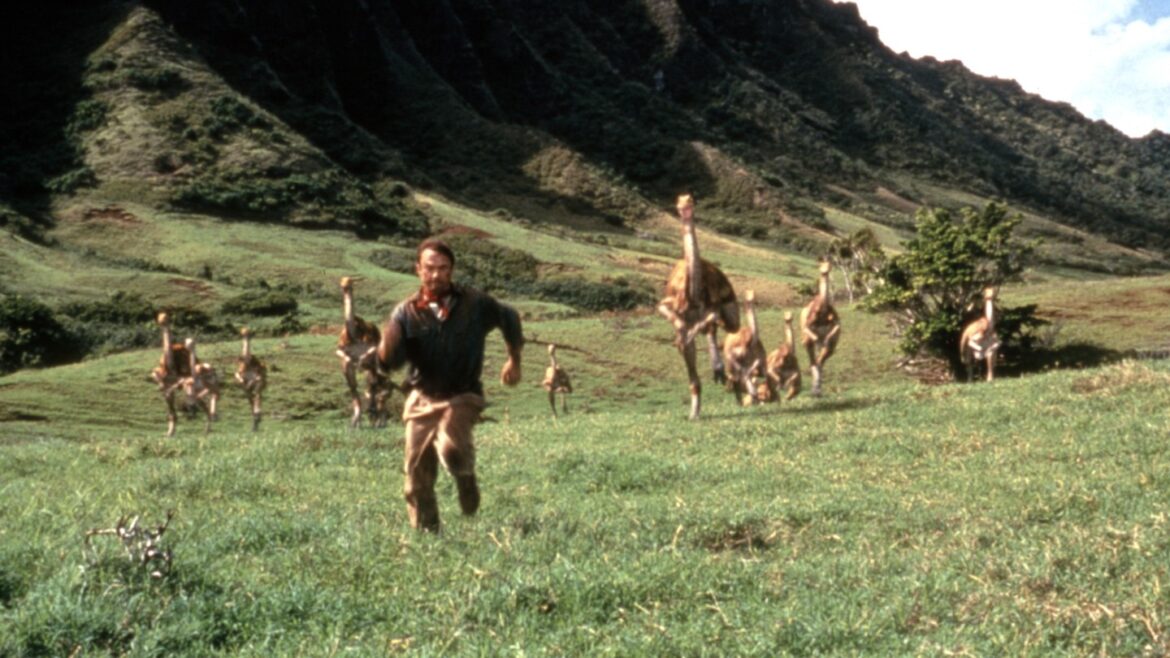When Steven Spielberg’s Jurassic Park burst onto screens in 1993, audiences were swept away (to the tune of around $914 million) by its dinosaurs, drama — and location.
Jurassic Park looked like it had been shot on the far reaches of another world entirely, but what many of the film’s scenes were showcasing — as they would across the franchise’s next three installments — was the absolutely stunning splendor that filmmakers have been finding on the Hawaiian island of Kauai since the 1930s.
“There is a sense you get in some movies that you’ve really traveled somewhere, and Jurassic Park has that, largely because of Kauai and the power of its imagery and diversity,” the blockbuster’s production designer Rick Carter would later explain in the Making of Jurassic Park book. “There is a very romantic quality about the island, but it is not all benign. There are areas which are some of the most beautiful pasture land in the world; other areas are more mountainous, with rougher terrain. For Jurassic Park, we took everything Kauai had to offer and jam-packed it into our own little island.”
Spielberg had first been lured to the island by friend and frequent collaborator George Lucas, and the pair used Kauai for the iconic opening frames of 1981’s Raiders of the Lost Ark, which feature Harrison Ford as the intrepid archaeology professor Indiana Jones running out of a cave and into the jungle with a boulder in hot pursuit. Other productions through the years to use the 552-square-mile island — also known as “the Garden Isle” — as a location have included 1958’s South Pacific, 1976’s King Kong and 2008’s Tropic Thunder.
“Growing up in the ’80s and ’90s, we had quite a few big productions here — Jurassic Park, Indiana Jones,” explains Sandy Kaauwai, Kauai film commissioner. “We had a mix of movies in the past before those big ones, including South Pacific, but it wasn’t really until Jurassic Park hit that we were actually put on the block.
“We were still a relatively unknown place at that point, and it was George Lucas who vacationed here and saw all this potential,” she adds. “He was actually a huge part of our development as a location thanks to his friendship with Steven Spielberg and them working on Jurassic Park. When that film came out, we were really on the map.”

‘Lily & Stitch’
Notable destinations on Kauai in Jurassic Park — now deeply etching into cinema folklore — include the majestic Manawaiopuna Falls. Other destinations on the island featured in major productions include the 14-mile-long Waimea Canyon — also known as “The Grand Canyon of the Pacific” — in Honeymoon in Vegas as well as the jungles and mountains around Ha‘ena (Raiders of the Lost Ark and South Pacific). Meanwhile, Hanapepe Town and the Hanapepe Valley were used as the model for the town that’s featured in the Disney animated hit Lilo & Stitch.
It’s a history that has been charted in local writer Chris Cook’s in-depth The New Kauai Movie Book, which goes to great lengths to share filmmakers’ experiences of Kauai through the years, with those tales of the Jurassic Park shoot and a little gem from producer Jerry Bruckheimer, who used the island for Pirates of the Caribbean: On Stranger Tides after deciding the film “required landscapes so beautiful they’re almost otherworldly.”
The state of Hawaii has recognized the importance of the film industry to both Kauai and the archipelago as a whole, with the tax benefits offered for shoots first introduced in 1997 having grown incrementally since. Currently, they sit at a 27 percent rebate for spending over $100,000 on Kauai — higher than the 22 percent offered for shoots on nearby Oahu — with caps at $17 million per project and $50 million per year. Kaauwai reports that there are hopes to improve the tax credit further during this year’s state legislative session.
Support for cinema has become deeply entrenched in the local economy, too, with Hawaii’s Department of Business, Economic Development and Tourism estimating in a 2024 study (based on tax credits from 2022) that film shoots accounted for $260 million in contributions to the state’s GDP (via $68 million in credit claims). The Hawaii Film Alliance — an organization formed this year in an effort to “revitalize the state’s film industry” post-pandemic — says the rebates “generate a five-fold return in economic activity, supported 2,247 jobs in 2024, led to an estimated 15 percent to 20 percent increase in tourism for locations featured onscreen and resulted in an additional $1.3 billion in Hawaii visitor spending,” according to Hawaii News.
“In recent years, more destinations have realized how important location shooting can be — and that’s why today the market is so competitive,” says Kaauwai. “But we have a long-established support system so that the support we give is not really just a bunch of numbers. We can help with locations, we can help arrange hotel rooms, catering or pretty much the gamut of things that happen during a shoot. We have the experience — and we have our island.”
Kaauwai grew up immersed in all that beauty and watched as the film world started to explore her home and to make use of what it offers.
“I think probably our jungle, our greenery, is our main selling point,” she says. “It’s just beautiful here. But we also have beaches, beautiful beaches. We have incredible valleys and waterfalls and mountainous regions. From the north side, which is completely green and lush, to the west side, which is more of a dry area, desert-type place, there are just so many different landscapes to work with.”


Comments are closed.